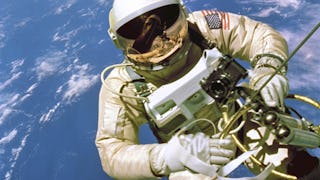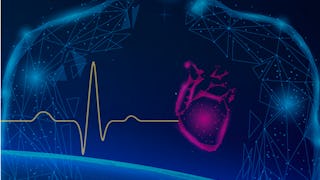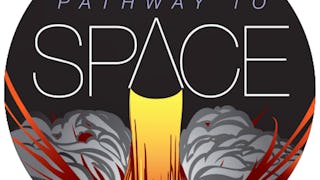The course provides an overview of European activities in the field of astronautical and robotic exploration. In the context of ESA's exploration strategy "Terrae Novae", scientific goals for the exploration of the Moon and Mars, technological challenges, potential commercial opportunities in the field of exploration, as well as physiological aspects of long-term astronautical missions in low Earth orbit and beyond will be considered.



(16 reviews)
Recommended experience
What you'll learn
Build an applied understanding of past, present, and future Moon and Mars missions, focusing on the technical challenges that need to be overcome.
Details to know

Add to your LinkedIn profile
14 assignments
See how employees at top companies are mastering in-demand skills


Earn a career certificate
Add this credential to your LinkedIn profile, resume, or CV
Share it on social media and in your performance review

There are 8 modules in this course
Exploring our solar system is about expanding the boundaries of our understanding and specifically finding the proof that life might have emerged on other planets. We are witnessing a decade in which humans will return to the surface of the Moon to prepare for a sustainable presence, with a strong and visible role for Europe. We might eventually find evidence of past or current life on our neighboring planet Mars. This course gives an insight into strategic, scientific and technological activities related to these two destinations.
What's included
3 videos1 reading
In this module, the context of the European Space Agency exploration activities will be introduced, including the drivers and reasons for exploration. You will learn about the international context of space exploration, ESA’s strategic objectives and current strategy, and the programmatic framework of Terrae Novae (ESA’s European Exploration Envelope programme). We will also look at the future evolution of the European strategy and programme.
What's included
3 videos1 reading2 assignments
This module consists of three parts covering the following topics: 1. Principles - Why is the Moon important, and what are “basic principles”? The Moon’s role as a gateway into the solar system is a consequence of celestial mechanics and the current state of engineering. Given the need to “stage”, i.e., to split a space transportation system into different phases, in between which the vehicles are ejected, refilled, combined, or otherwise re-configured, the rocket equation and achievable performance in structure and propulsion systems of the vehicle determine the achievable benefit. We discuss how to apply basic principles and why they are also important in the end-to-end development of an architecture. 2. Destinations - What is the strategic high ground in cis-lunar space, and how do we get there? The gravitational field of the Earth-Moon system offers a rather complex playing field for the optimization of launch windows, transfers, and staging strategies. We investigate several key points in this gravitational field: LEO, LLO, and Earth-Moon libration points. 3. Programmes - How do current architectures perform, and what can Europe contribute? How do existing capabilities (Ariane 6, SLS, Starship) perform within an Earth-Moon exploration architecture? We compare the approaches and performances in a meaningful manner. We find that Europe can do more in the frame of international Moon exploration initiatives, if basic principles are properly applied and combined with programmatic knowledge.
What's included
4 videos1 reading2 assignments
This module discusses the relevance, resources, availability, and processes of using materials found in space to enable long-term exploration of our solar system. Initially, the need for in situ resource utilization (ISRU) is highlighted and a broad introduction is given. The course then mainly focuses on how ISRU can be beneficial in the near-term exploration context with emphasis on the Moon and Mars, highlighting resources on these bodies and showcasing techniques to utilize them. Finally, more advanced applications, such as asteroid mining, and further applications, such as space based solar power, are briefly discussed.
What's included
3 videos2 readings2 assignments
The Moon, with the Sun, is the most prominent object in the sky and Earth’s direct neighbor. Observation has been limited to telescopes until the beginning of the age of spaceflight. 1959, the Moon was visited for the first time by a space probe, culminating ten years later in Neil Armstrong’s famous »giant leap. « Twelve astronauts walked on the lunar surface and contributed tremendously to the scientific harvest. The Apollo program was way more than a victory in a politically motivated space race. 382 kilograms of lunar rocks returned to Earth by the six successful missions, and plenty of experimental data, opened a »window to the early Solar System«. The analyses were fundamental in understanding the origin and evolution of terrestrial bodies. Many questions, though, remained unanswered, and new questions arose. Therefore, new projects, are in preparation to return to the Moon, and soon astronauts, too. There will be exciting missions in the years to come; and with it: science.
What's included
4 videos2 readings2 assignments
This presentation provides a comprehensive chronological overview of past, ongoing, and forthcoming Mars missions, which encompass exploration through orbiters, landers, and rovers. We will delve into the current state of scientific knowledge about Mars and learn about the datasets that scientists have utilized to acquire this information. Additionally, we will take a closer look at the sample collection from the Martian surface. By exploring the past and present missions, we aim to gain insights into the progress made in our understanding of Mars and its unique features. As we peer into the future, the presentation will elucidate upcoming missions, revealing the strategic endeavors planned to further unravel the mysteries of our neighboring planet.
What's included
4 videos2 readings2 assignments
This module addresses the role of commercialization in delivering the ESA Space Exploration Programmes and accelerating the space exploration process in general. It is subdivided into three learning modules: Commercial Service Procurements for Space Exploration, Markets enabled by Space Exploration and Commercialisation Policy, Benefits and Risks. It provides an overview of different types of commercial procurement mechanisms, identifies markets that are impacted by Space Exploration, and explains the broader benefits and risks of commercialization. Concrete examples of ESA and NASA commercial procurement approaches are provided as well as an explanation of the broader role of Space Agencies in growing the commercial space exploration sector.
What's included
3 videos1 reading2 assignments
Stress is regarded as the bodily response to all the physical, mental, or emotional pressures occurring in a living environment. In space, all body systems are affected by a myriad of strong stressors, summarized as the space exposome. Several studies have been performed in space and space-analogues to better understand the causal relationships between stress, stress overload and disease, and to thereby elaborate efficient personalized countermeasure strategies, with a mutual benefit for humans in space and on Earth. During future deep-space explorations to the moon or Mars, the intensity of space stressors will increase, which requires the further development of innovative mitigation strategies such as artificial gravity or hibernation.
What's included
3 videos1 reading2 assignments
Instructor

Offered by
Explore more from Physics and Astronomy


University of Houston


Duke University


University of Michigan


University of Colorado Boulder
Why people choose Coursera for their career





Open new doors with Coursera Plus
Unlimited access to 10,000+ world-class courses, hands-on projects, and job-ready certificate programs - all included in your subscription
Advance your career with an online degree
Earn a degree from world-class universities - 100% online
Join over 3,400 global companies that choose Coursera for Business
Upskill your employees to excel in the digital economy
Frequently asked questions
Access to lectures and assignments depends on your type of enrollment. If you take a course in audit mode, you will be able to see most course materials for free. To access graded assignments and to earn a Certificate, you will need to purchase the Certificate experience, during or after your audit. If you don't see the audit option:
The course may not offer an audit option. You can try a Free Trial instead, or apply for Financial Aid.
The course may offer 'Full Course, No Certificate' instead. This option lets you see all course materials, submit required assessments, and get a final grade. This also means that you will not be able to purchase a Certificate experience.
When you purchase a Certificate you get access to all course materials, including graded assignments. Upon completing the course, your electronic Certificate will be added to your Accomplishments page - from there, you can print your Certificate or add it to your LinkedIn profile. If you only want to read and view the course content, you can audit the course for free.
You will be eligible for a full refund until two weeks after your payment date, or (for courses that have just launched) until two weeks after the first session of the course begins, whichever is later. You cannot receive a refund once you’ve earned a Course Certificate, even if you complete the course within the two-week refund period. See our full refund policy.
More questions
Financial aid available,


